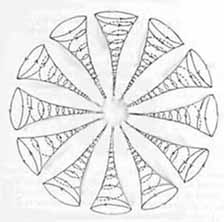
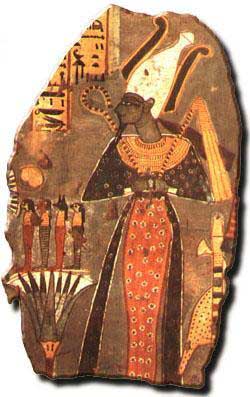
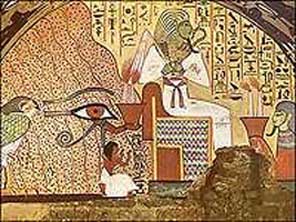



June 12, 2002
When I awoke this morning I was dreaming that I was talking to Osiris, an Egyptian God who wore a conical shaped hat. His partner was Isis. As a watched him, his headdress suddenly started to spiral from the top of his head. It became a pyramid of light energy then changed into the flame of creation into which he disappeared. The top of Osiris' headdress is torus shaped. This is a reference to creation by consciousness.
The Tube Torus is derived from the basic study of the Flower of Life. By using a simple compass one can create the Flower of life very easily. There are seven basic steps in the composition of the Seed of Life which, if continued to its conclusion, yields the study of the vortex through the Flower of Life. This goes to spiraling consciousness, coiling (DNA) back to source.

Seed of Life
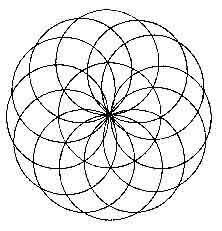

the side and nested.
Views of the Tube Torus as the

polar grid in other positions.
Golden Ratio/Mean Spiral

from two different calculations


If you copy the Golden Mean Spiral several times and use the same center point, then place it in a circle, you obtain another means of viewing a vortex. This can also be done with any calculable spiral such as the Fibonacci spiral.

from an angle with reflection.
Looking at the Golden Mean

from the side.
Zero Point
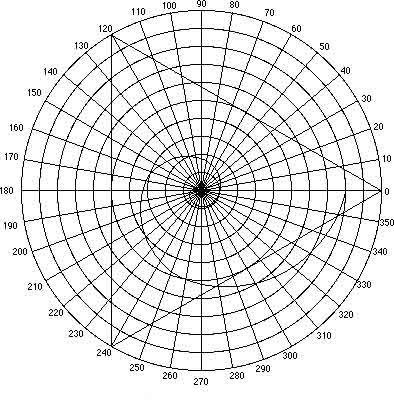
Harmonics of Sound
View of the polar grid derived from the Flower of Life containing the same Golden Mean Spiral. As you contemplate this image, the beginning of the study of Character Math seems to appear. This is a one dimensional look at the polar grid which is actually 3 dimensional. The study of music and how it pertains to the Flower of Life and the polar grid, yields harmonic calculations which describe other proportional properties in Sacred Geometry. Phi Harmonics research continues at San Graal School of Sacred Geometry. There are links on the front page to other articles and downloadable music files which are pertinent to the study of The Language of Light, according to Phi and the Vibration of our Universe.
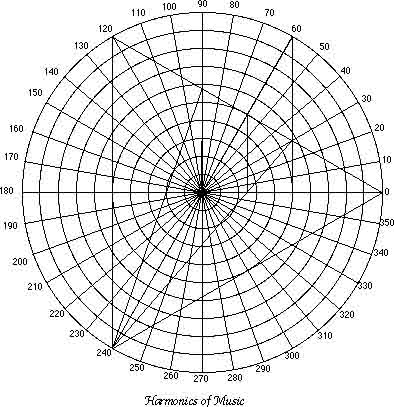
Calculating the polar grid from a different perspective we get the harmonics of music equaling the twelfth root of two, which is the standard for tuning harmonics as we know them.
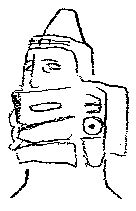
Quetzalcoatl wears a conical cap as wind god Ehecatl. He brought love into the world by mating with the maid Mayahuel as a single tree with flowering branch.
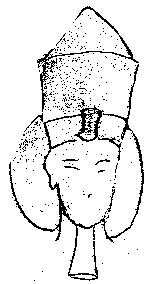
Pharaoh Akhenaten, from a statue in the library of the British Museum. The Pharaoh is equally a priest and a ruler, and wears the crown of the two halves (upperworld and underworld) of his dominion. the lower crown denotes the upperworld, the high conical hat the lower.
P>
Traditional Vietnamese conical hats or 'Non La'


Mysterious gold cones 'hats of ancient wizards - Telegraph.com - June 17, 2002
Wizards really did wear tall pointed hats, but not the crumpled cloth kind donned by such fictional characters as Harry Potter, Gandalf and Merlin. The wizards of early Europe wore hats of gold intricately embellished with astrological symbols that helped them to predict the movement of the sun and stars. This is the conclusion of German archaeologists and historians who claim to have solved the mystery behind a series of strange yet beautiful golden cone-shaped objects discovered at Bronze Age sites across Europe.
Four of the elaborately decorated cones have been uncovered at sites in Switzerland, Germany and France over the past 167 years. Their original purpose has baffled archaeologists for decades. Some concluded that they were parts of Bronze Age suits of armour; others assumed that they served as ceremonial vases. A third theory, which had gained widespread acceptance until now, was that the cones functioned as decorative caps that were placed on top of wooden stakes that surrounded Bronze Age sites of worship.
Historians at Berlin's Museum for Pre- and Early History, however, claim to have established with near certainty that the mysterious cones were originally worn as ceremonial hats by Bronze Age oracles. Such figures, referred to as "king-priests", were held to have supernatural powers because of their ability to predict accurately the correct time for sowing, planting and harvesting crops.
"They would have been regarded as Lords of Time who had access to a divine knowledge that enabled them to look into the future," said Wilfried Menghin, the director of the Berlin Museum which has been carrying out detailed research on a 3,000-year-old 30 inch high Bronze Age cone of beaten gold that was discovered in Switzerland in 1995 and purchased by the museum the following year.
Mr Menghin and his researchers discovered that the 1,739 sun and half-moon symbols decorating the Berlin cone's surface make up a scientific code which corresponds almost exactly to the "Metonic cycle" discovered by the Greek astronomer Meton in 432 BC - about 500 years after the cone was made - which explains the relationship between moon and sun years. "The symbols on the hat are a logarithmic table which enables the movements of the sun and the moon to be calculated in advance," Mr Menghin said. "They suggest that Bronze Age man would have been able to make long-term, empirical astrological observations," he added.
The findings radically alter the standard image of the European Bronze Age as an era in which a society of primitive farmers lived in smoke-filled wooden huts eking out an existence from the land with the most basic of tools.
Another cone, found near the German town of Schifferstadt in 1835, had a chin strap attached to it. The cone, which is also studded with sun and moon symbols, is the earliest example found and dates back to 1,300bc.
Other German archaeologists have suggested that the gold-hatted king-priests were to be found across much of prehistoric Europe. Prof Sabine Gerloff, a German archaeologist from Erlangen University, has found evidence that five similar golden cones were exhumed by peat diggers in Ireland during the 17th and 18th centuries.
These objects, described at the time as "vases", have disappeared. Prof Gerloff says, however, that her research suggests almost conclusively that they were hats worn by Bronze Age king-priests. She is also convinced that a Bronze Age cape of beaten gold - the "Gold Cape of Mold" discovered in Wales in 1831 - was part of a king-priest's ceremonial dress. Prof Gerloff has used computers to create an impression of a Bronze Age oracle wearing a golden hat and with an elaborately decorated golden cape wrapped tightly around the shoulders.
A conical hat is a hat shaped like a cone. Conical hats and caps can generally be subdivided into two types by the angle through their Cross-section: acute angle: pointy hat - Obtuse angle: conical straw hat
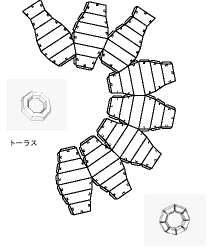
The Donut Effect
12 Spiraling Cones Around 1 - Creation
